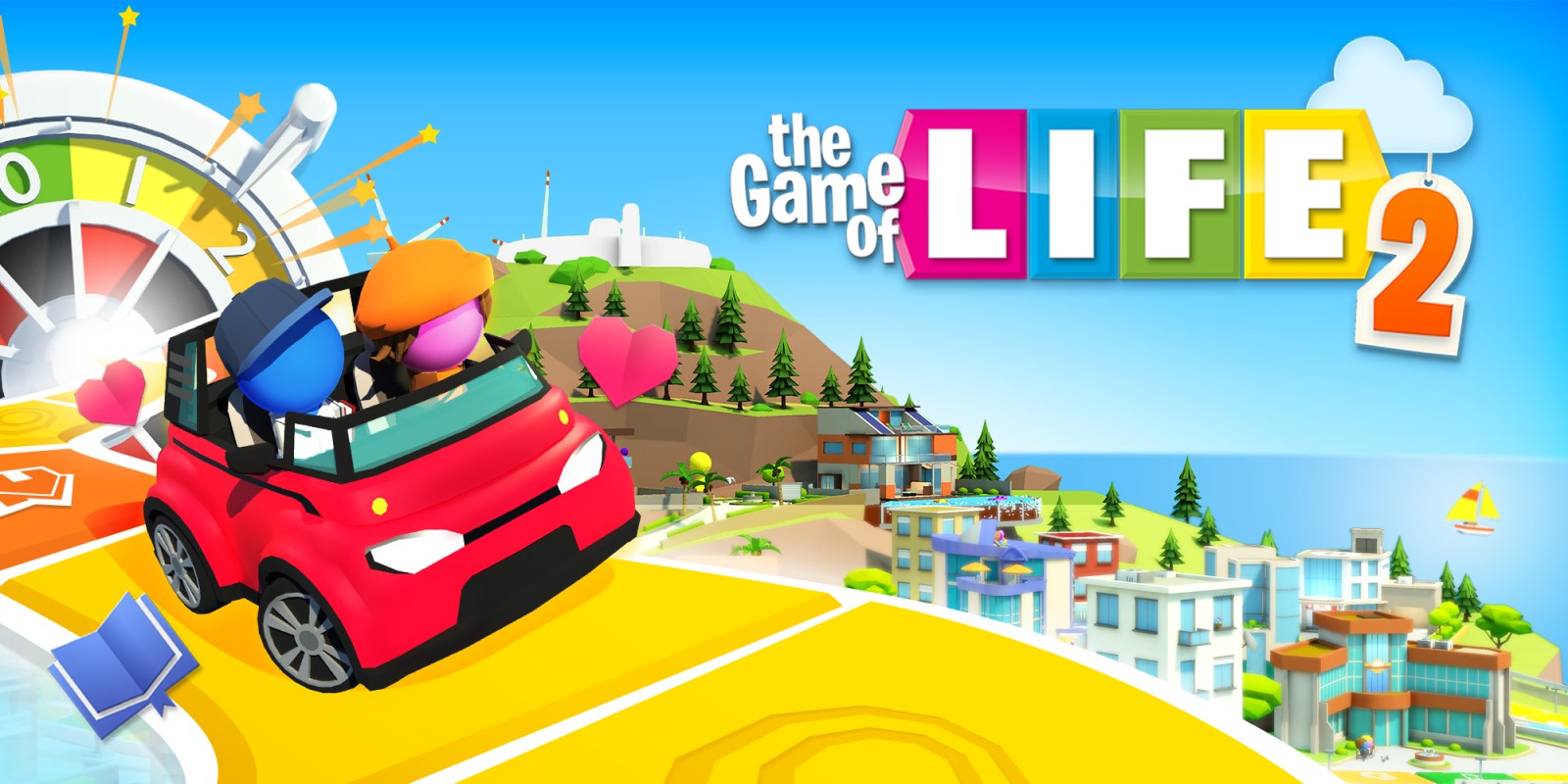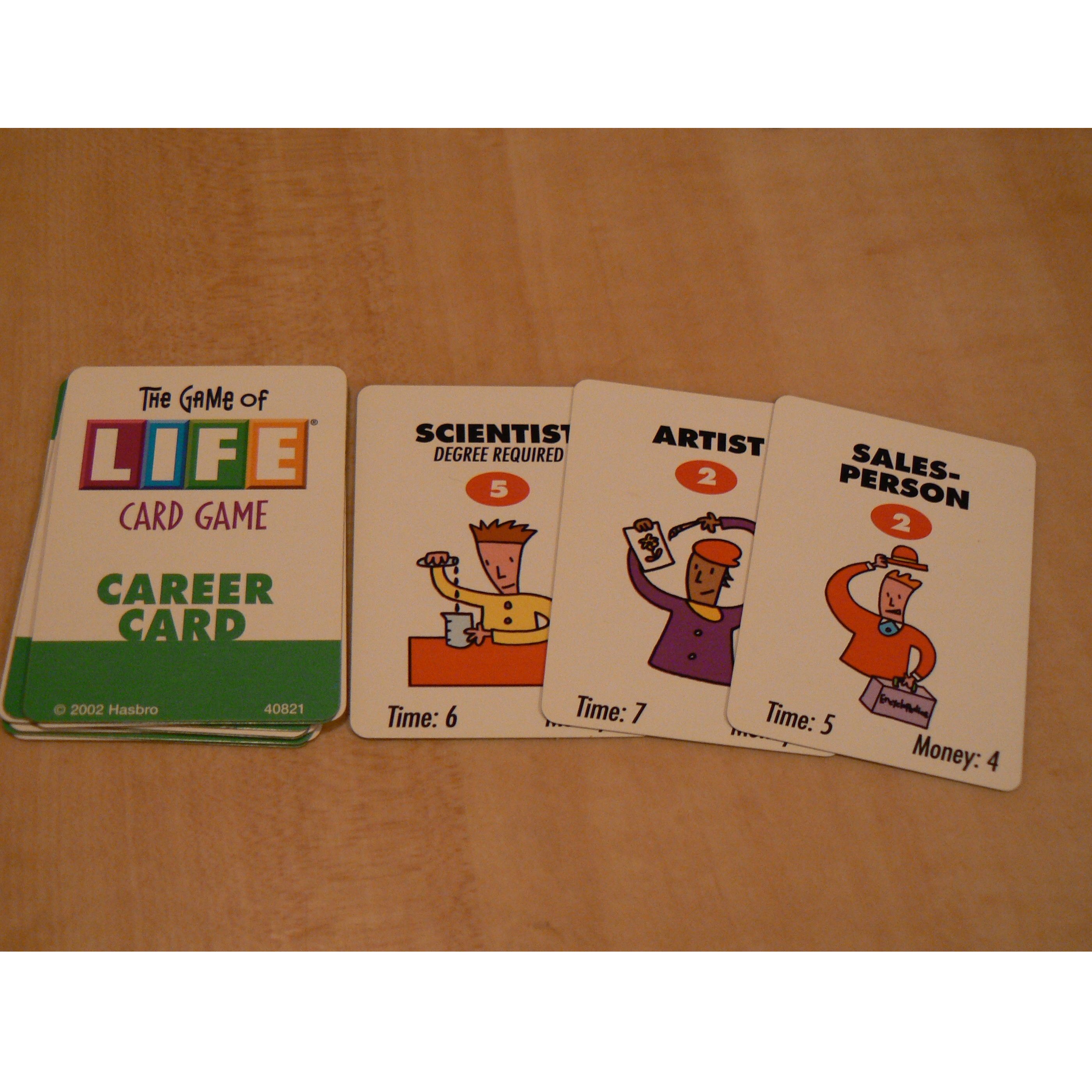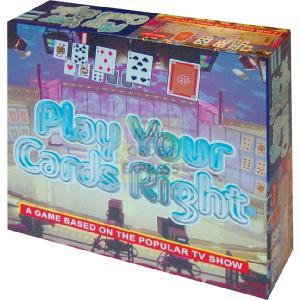
At marriage, this amount was determined by spinning the wheel: spinning 1, 2, or 3 was worth $2,000 per opponent 4, 5, or 6 was worth $1,000 7 through 10 earned nothing. Upon adding a member to the family (getting married, having children, etc.) the player "collected presents" from each of the other players. If a player had an Exemption Card, a Share the Wealth card levied was canceled both cards were then removed from the game.If a player landed on a space in which money was paid to the bank, or had to pay Taxes, the player could present a Pay card to an opponent, who immediately had to pay half of the first player's penalty.If a player landed on a space where money was collected from the bank, or received a Pay Day, an opponent with a Collect card could steal half the collected money from that player.There were three types: Collect, Pay, and Exemption, and they were used as follows: Each player started out with one, and earned another card if "Pay Day" was reached by exact count. Both of these initial routes joined back together at the first Pay Day.ĭistributed with this game were a number of "Share the Wealth" cards. The longer route was entitled College and could earn the player anywhere between $16,000 and $50,000 for every Pay Day. The shorter route was entitled Business and resulted in the player receiving a set salary of $12,000 per Pay Day. To determine one's salary, a player could travel one of two routes at the beginning of the game. (1960s era convertibles were still used in some early 1980s sets.) The late 1980s version also replaced the familiar convertibles from earlier versions with Chrysler-esque minivans.

This description focuses on the later version with the larger dollar amounts. Both of these initial routes joined back together at the first pay day.Ībout halfway through the production of this version, many dollar values doubled (possibly to reflect inflation). The longer route was entitled College and could earn the player anywhere between $6,000 and $20,000 per Pay Day.

The shorter route was entitled Business and resulted in the player receiving a set salary of $5,000 per Pay Day. KnnlTo determine one's salary, a player could travel one of two routes at the beginning of the game.
#Game of life cards prices full
It was advertised as a "Milton Bradley 100th Anniversary Game" and as "A Full 3-D Action Game!" This version had Art Linkletter as the spokesman, included his picture on the $100,000 bills, and a rousing endorsement from Linkletter on the cover of the box. For one, once a player reached the Day of Reckoning, he could end up at the "Poor Farm", or he could become a Millionaire Tycoon and move on to Millionaire Acres. The Game of Life copyrighted by the Milton Bradley company in 1963 had some differences from later versions. Other tangibles vary with the game version. (Some "early modern" editions have eight automobiles.)Įach game also includes a setup for a bank, which includes play money (in denominations of $1,000, $5,000, $10,000, $20,000, $50,000, and $100,000), insurance policies (automobile, life, fire, and/or homeowners' insurance depending on the version), $20,000 promissory notes, and stock certificates. Playing pieces (pawns) are small, colored plastic automobiles which come in six different colors (red, blue, white, yellow, orange, and green), and each pawn has six holes in the top in which the blue and pink "people pegs" are placed throughout the game as the player "gets married" and has or adopts "children". The board also contains small mountains, buildings, and other similar pieces, making the playing area three-dimensional. The game consists of a track, on which players travel by spinning a small wheel with spaces numbered 1 through 10, located in the middle of the board. In 1960, the one hundredth anniversary of the game, the form of the game now known as The Game of Life, was introduced, designed by Reuben Klamer. A player could gain fifty points toward this goal by reaching "Happy Old Age" in the far corner, opposite "Infancy" where one began. The object was to land on the "good" spaces and collect 100 points. The game board was essentially a modified checkerboard. īradley's game did not include dice, but instead used a teetotum, a six sided top (dice were considered too similar to gambling). Ives in 1843, it had a strong moral message. Like many games from the 19th century, such as the The Mansion of Happiness by S.B.

The game sold 45,000 copies by the end of its first year. This was the first game created by Bradley, a successful lithographer, whose major product until that time was a portrait of Abraham Lincoln with a clean shaven face, which did not do very well once the subject grew his now-famous beard.

The game was originally created in 1862 by Milton Bradley as The Checkered Game of Life.


 0 kommentar(er)
0 kommentar(er)
